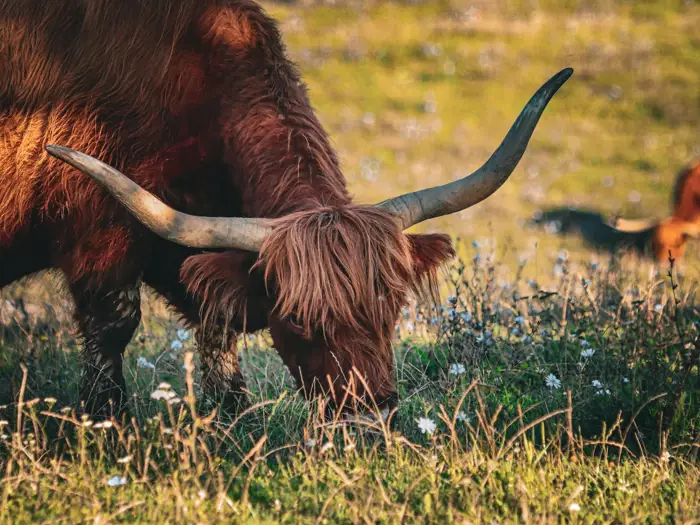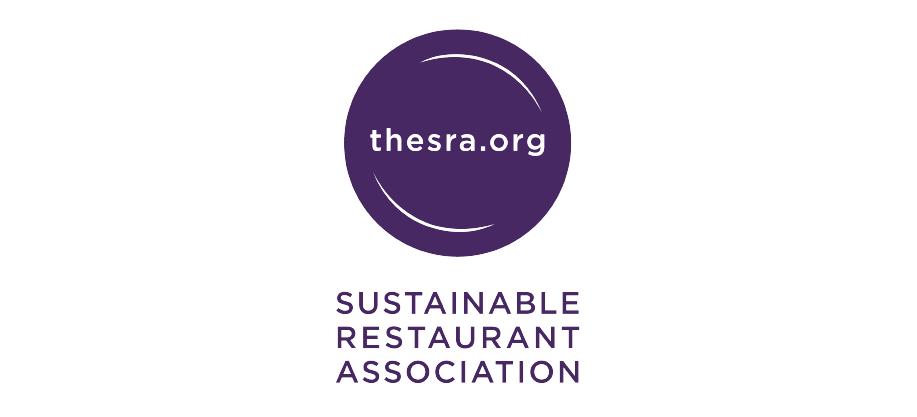What Does Serving ‘Better’ Meat Mean for Your Restaurant?
17 September 2024
Share this exclusive content from Saladplate

Photo Credit: The Sustainable Restaurant Association (TRSA)
IN THE FOOD MADE GOOD STANDARD, WE ENCOURAGE RESTAURANTS TO SERVE MORE PLANTS AND BETTER MEAT – BUT WHAT DOES THE TERM ‘BETTER MEAT’ REALLY MEAN?
The production of meat and dairy is playing a significant part in the climate crisis – not just through emissions, but also by driving deforestation and land use change. While it’s clear that humanity on the whole (and especially countries in the Western world, for whom meat consumption is particularly high) must shift toward a more plant-rich diet, this doesn’t mean that everyone must become vegan or vegetarian.
Through the ‘More Plants, Better Meat’ focus area of our Food Made Good Standard, we encourage restaurants and other F&B businesses to dish up a greater proportion of plant-rich meals. While we’ve previously explored the ‘more plants’ part of this concept – sharing articles about ways to encourage the uptake of plant-based dishes, the latest plant-based food trends and the benefits of serving more plant-based meals – this article will explore the second half of this topic. If your business does serve meat, how can you do this in a way that is better for the planet, for the animals involved and for your customers? What does the phrase ‘better meat’ actually mean?

Defining better meat
In April 2024, the WRI released a paper called ‘Towards Better Meat’, exploring exactly this. In an effort to provide a science-led definition for ‘better meat’, the WRI combined a literature review with interviews with 17 food industry organisations and experts. This research revealed a group of attributes commonly associated with the concept of ‘better’ meat. These were:
- Environmental factors (climate impact; biodiversity; water use; water quality and pollution; land use change; soil health),
- Social and ethical impacts (animal welfare; antimicrobial resistance; farmer livelihoods; local sourcing; nutrition and public health; equity and social justice), and
- Economic and financial attributes (perceived quality; cost, profitability, and consumer affordability).
How does the Food Made Good Standard define better meat?
We believe that, if we are to eat meat, it should be of the best quality and raised in the best conditions possible. When it comes to ‘better meat’, the FMG Standard encourages serving a reduced offering of meat and dairy while also working to improve the quality of the meat and dairy you do buy.
Reduce Your Offering
Here are some ways in which you can reduce your offering of meat and dairy:
- Reduce the proportion of dishes you’re serving that feature meat and dairy.
- Reduce the percentage of these ingredients used within each recipe; one example could be replacing some of the beef in a burger patty with ground mushrooms.
- Choose to include meat and dairy only in starters, sides or small plates.
- Feature meat and dairy as optional extras, where their inclusion will incur an additional charge; one example could be a mixed bean chilli where customers can choose to add chorizo.
- Even smaller actions add up to make a difference: could you cook some (or all) dishes using plant-based oils instead of butter, or stop using gelatine in favour of a plant-based gelling ingredient like carrageen?
Source Better Meat and Dairy
When it comes to sourcing better meat and dairy, here are some actions you can take:
- Source options that have been produced using regenerative agricultural methods and/or environmentally friendly practices, such as pasture feeding.
- Look for organic or biodynamic certification or, if not certified, foods that are produced to the highest standards of animal welfare and environmental management. At the very least, these standards should meet or exceed statutory minimums.
- Avoid meat that has been raised on soy-based feed, as this is a significant cause of deforestation.
- Serve unconventional cuts of meat, or meat from animals traditionally considered as waste in your region, such as male kid goats or cull ewes.
- Seek diversity in the types of meat you serve, using heritage or rare breeds, or otherwise less popular species.
- Wild game meat for which there is no conservation threat is also a great option.
The trade-offs of better meat (and what to do about it)
As explored in the WRI’s ‘Towards Better Meat’ paper, there are often trade-offs among sustainability goals when it comes to sourcing meat. Production facilities with better standards of animal welfare often have higher environmental impacts per kilogram of protein; requiring vastly more land than more intensive industrialised systems, they can also contribute to the clearing of forests.
However, the research concluded that, “with careful planning, it is possible to source higher welfare meat and dairy while still lowering food-related emissions and land use overall”, outlining six strategies to help food providers do so; these are briefly summarised below.
The biggest takeaway is that, in cases where sourcing ‘better meat’ is likely to increase your restaurant’s environmental impacts, it’s important to adjust your menus to include ‘even less meat’.
How can I balance ‘better meat’ with my climate goals?
The WRI recommends six steps that companies can take to design a sourcing strategy that will allow them to achieve their climate and nature goals while also buying “better meat’.
- Calculate the scope 3 GHG emissions baseline of your food purchases. This will allow you to understand how much of an impact meat has on your overall food-related carbon footprint.
- Shift from high-emissions products like beef and lamb toward lower-emissions products like plant-based foods and alternative proteins, a triple win for climate, nature and animal welfare.
- Define your priorities around improved meat sourcing by product type. (For example, for beef, your goal might be to reduce climate and land impacts – both through buying less of it, and through encouraging lower-emissions production methods. For chicken and eggs, your goals might be to improve animal welfare, promote responsible antibiotic use and minimise water pollution.)
- Assess the potential impacts of changing your sourcing strategies on climate and other sustainability goals.
- If your analysis suggests that sourcing ‘better meat’ will lead to higher environmental impacts (for example, by increasing your carbon footprint), you should push beyond ‘less meat’ to an ‘even less meat’ strategy to stay on track with your sustainability targets.
- Engage with your suppliers to encourage them to improve their production practices and develop more transparent emissions quantification. As with all sustainability work, your impact can be greatly amplified by creating a ripple effect throughout your supply chain.

Source: The Sustainable Restaurant Association



